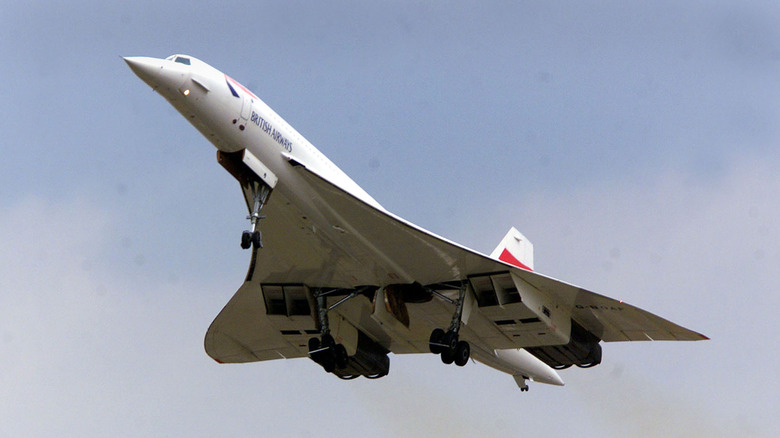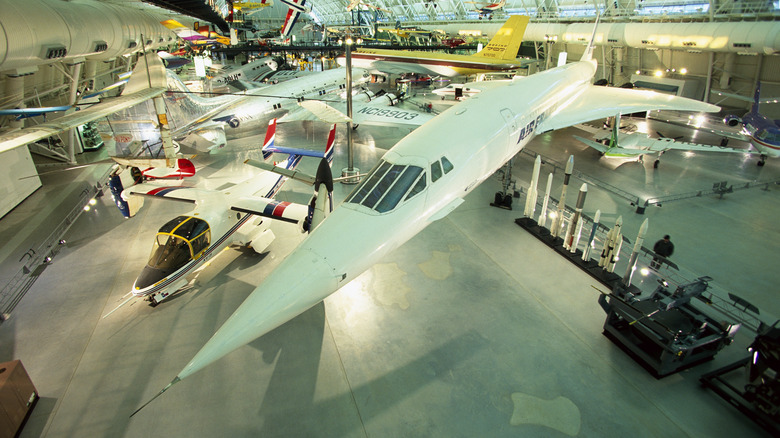How Fast Could The Concorde Cross The Atlantic?
There was nothing like the Concorde when it went into flight service in 1976, and there's been nothing like it since. This supersonic jet was able to fly faster than sound travels, breaking the sound barrier for the first time in commercial flight. It had an iconic, unforgettable look, with a sleek body, no tail, a delta wing, and a droop nose that could lower for takeoff and landing.
The Concorde could achieve incredible speeds thanks to its four turbojet engines. These Rolls-Royce Olympus engines used reheat technology, which reheats gas to extreme temperatures in the afterburner combustor for extra power at take-off and during the transition to supersonic flight. With this technology, the Concorde could make record-breaking flight times, traveling from New York to London in less than three and a half hours. Today, about 50 years since the Concorde first made its debut, that same flight takes approximately seven hours!
The Concorde emerged during a time of great achievement in aviation, soon after the moon landing in 1969. Numerous countries and the aviation industry itself were competing to achieve the fastest flight times. In the late 1950s, both the United Kingdom and France were developing supersonic planes. The cost was so high that the U.K. sought out a partner, and France answered the call. The Concorde project was the result of an international treaty between the two countries, and it was eventually operated by both British Airways and Air France. But unfortunately, it's not possible to take a ride on the Concorde today.
The Concorde's fate
The Concorde is no longer in service, but even if it was, few of us would likely ever experience a flight. Known for its luxury and cuisine, as well as its incredible speed, the Concorde was also a very expensive ride. At the time, a ticket cost about $12,000 for a round trip, or almost $70,000 today. The plane could seat 92 to 128 passengers, but where it could actually fly was very limited due to the sonic boom it produced and how noisy it was. If it flew over residential areas, the sonic boom could shatter windows. Thus, Concorde flights almost never went over land, instead making transatlantic flights between New York, Washington, London, and Paris.
The age of supersonic flight ended with the Concorde's last transatlantic run on October 24, 2003, flying from John F. Kennedy International Airport in New York to Heathrow Airport in London. Multiple factors led to the end of this era. The Concorde was restrictively expensive for passengers because it was so costly to operate. It consumed more fuel than your typical passenger jet and was incredibly noisy. Only 20 Concorde planes were built and, with the exception of Air France and British Airways, no airline ordered them. After a Concorde crashed shortly after takeoff in France in July 2000, killing everyone on board, the program could not recover.
Today, several of these unique planes are displayed all over the world, including the National Air and Space Museum's Steven F. Udvar-Hazy Center, part of the Smithsonian, in Chantilly, Virginia. The museum is free to enter, and visitors can see the Concorde up close and even from above.

